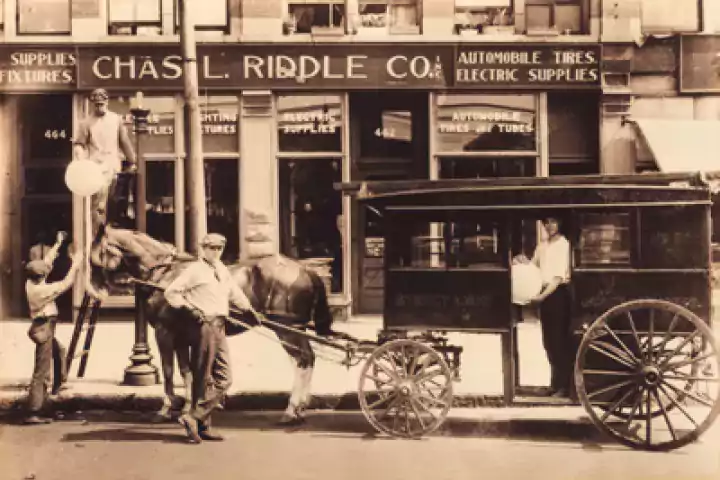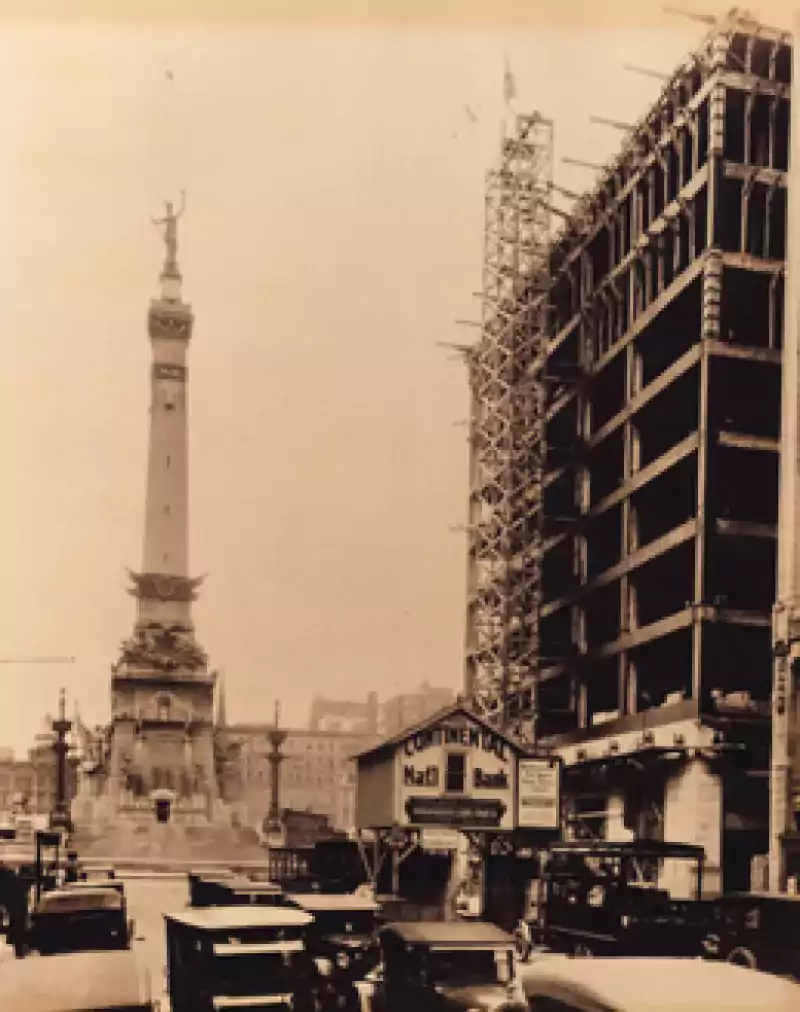
The Continental Bank was under construction on Monument Circle in 1924 with electricity supplied by Indianapolis Light and Heat Company. This building would later become the Electric Building in 1935 when it was purchased by Indianapolis Power & Light Company, today known as AES Indiana.
Electric service began in Indianapolis in the 1880s, pioneered by the predecessors to AES Indiana.
Two of those entities, Indianapolis Light and Heat Company and Merchant’s Heat and Light Company, merged into the newly incorporated Indianapolis Power & Light Company and began operations in January 1927. At that time, the company had a total of 105,000 customers. Today, AES Indiana provides retail electric service to more than 500,000 residential, commercial and industrial customers in Indianapolis, as well as in portions of other Central Indiana communities surrounding Marion County.
As its communities have grown, so has AES Indiana, which now generates more than 3,000 MW of power for a service territory that covers 528 square miles.
Since its inception, AES Indiana has always strived to be one of the most environmentally friendly utilities in the Midwest and has employed extensive emissions reduction technologies from the time of its first power plants in the 1930s to today. Several projects are underway to help ensure that AES Indiana generates power in the most cost-efficient, environmentally responsible way, including the building of a Combined Cycle Gas Turbine plant and converting to the use of natural gas at Harding Street Station. In addition, nearly 100 MW of solar power and 300 MW of wind power round out AES Indiana's generation resource mix.
During its long history, AES Indiana has safely supplied its customers with some of the lowest cost, most reliable power in the country. AES Indiana also provides critical economic and energy-related information and services to businesses looking to expand or relocate into the Indianapolis area. And the company works with customers to help them use electricity more efficiently, save energy costs and improve productivity.
Cleaning street lights in 1919 was a job for three men, a boy, a horse and wagon. However, motorized vehicles were already beginning to nudge the horse out of the business, as the signs on the store windows behind the team indicate.
